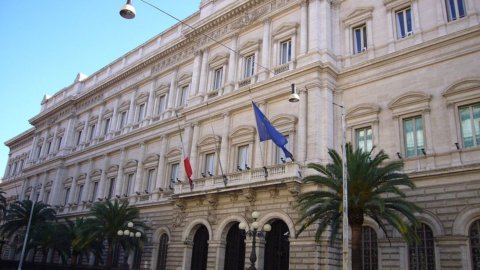Italian banks today
The Italian banking system - as claimed today by the head of Supervision of the Bank of Italy, Carmelo Barbagallo, speaking at the seminar on "The Italian banking system facing the recovery" held in Varignana in the province of Bologna - is gradually strengthening after a crisis that hit our country harder and longer than the rest of Europe. The strengthening is evidenced by the trend of two indicators widely used by supervisors and the market: the incidence of net non-performing loans on total loans (NPL ratio) and the ratio between the best quality capital and risk-weighted assets (CET1 ratio ). Between 2015 and 2017, the first indicator went from 10,8 to 7,6 per cent; the second from 12,3 to 13,8 percent. The reduction in non-performing loans is substantial and has involved both stocks and flows. The former, net of adjustments, decreased from the peak of 200 billion in 2015 to approximately 140 at the end of 2017. The latter are now equal, in relation to total loans, to approximately 2 per cent, against a peak of more than 5 percent in 2013.
The derisking process – continued Barbagallo – is destined to continue and will allow the Italian banking system to be brought towards normalisation. Several factors may contribute: immediate use of the possibilities offered by IFRS9 in first time adoption; looking ahead, the calendar provisioning initiatives and the implementation of plans for the disposal of anomalous loans, increasingly in line with the expectations of the Supervisory Authority. The growth of the CET1 ratio in 2017 is largely attributable to the raising of capital on the market by three intermediaries for 14 billion. In addition to self-financing, the disposal of part of the assets following the exit from the market of the two Veneto banks with public support and the precautionary recapitalization of Banca MPS contributed to this. In this latter regard, it should once again be emphasized that the costs of the banking crises for the taxpayer have been contained overall: according to recent estimates, the increase in public debt attributable to bank support amounts to around 1 per cent of GDP in Italy, against an average of 4,5 per cent for the countries of the euro area.
In 2017 profitability, although not yet satisfactory in European comparison, improved compared to the previous year. The weighted average return on own funds (ROE), net of extraordinary components, was 4 per cent, against an extremely negative ROE in 2016 (minus 6 per cent). The recovery in economic activity is reflected both in the demand for financial and insurance products – and therefore in commission income – and in the drop in the cost of risk. The banks are also recomposing their sources of revenue and acting on the cost containment front, favored by the absence of extraordinary contributions to the national resolution fund and by the drop - which is however not considered structural - in the charges associated with the incentives staff exodus. The improvement is mainly attributable to the positive performance of some large groups. Widening the gaze to the whole distribution, we observe a wide dispersion around the median datum, both for significant banks (SI) and for less significant ones (LSI).
Read the full intervention.





